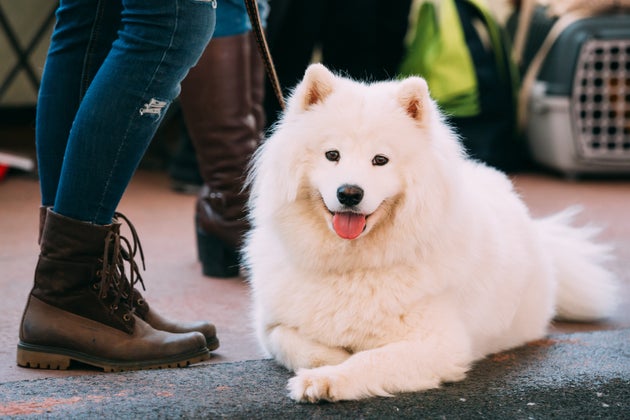I've had the last few of my board-n-train dogs' owners say to me, "you're so patient and gentle when you're training" with (insert their dog's name). I had one lady say it to me after every video I'd send of us working together, i.e., me and her dog. It was very kind of her to say. It struck me though as she said it in a way that sounded like she was surprised I could get such compliance out of her dog by being so kind and patient.People think that I'm magic and wish they could get the compliance from their dog that I can get. Guess what, you can! Communication and delivery of said communication is key!
I find it sad that people feel like they cannot get their dog to "listen" or train without being loud or worse. Training a dog doesn't require anyone to use a harsh tone, yell, physically manipulate the dog or any other number of more non-patient or gentle ways in order to get a dog to do what you ask.
You can actually train your dog to do anything without being a loud, stern and/or a harsh. I think it's been believed for so long that we must show this absolute domination over our dogs that we have lost sight of the fact that dogs do have emotional cups just like humans do. They can become stressed just like humans. Often a dog that doesn't "listen" or work for someone isn't doing it because they are dumb or stubborn, they are doing it because the trainer isn't carrying out the training in a way that fits the dog in front of them.

Dogs can respond the same way my daughter did –– seemingly as if they are dumb and don't know what to do, or not do anything and seem obstinate. Neither of those is actually what is going on, though. The dog is likely mentally shaken up and in a small state of "crap, crap, crap" and so they can respond in a way that isn't what we want. What is interesting is that dogs respond in several different ways when they are presented with something that stresses them out or causes confusion and/or frustration.
I've seen dogs that are frustrated, confused and/or shutdown do the following behaviors in response to their owner's yelling, punishment and/or frustration:
- freeze / do nothing
- do a quick sit
- become mouthy
- become bouncy or jump all over the person
- quickly run off
- get a case of the zoomies
- act goofy
- roll over & show their belly
- snarl or growl
- snap
- urinate
- defecate
I realize that dogs can often be annoying, frustrating and hard to manage . . . when we don't know what to do or how to do it. However, this is also why it's critical to do the following . . .
1) Learn to understand dog behavior, body language & what it all means.
2) Forget all that dominance and alpha theory stuff, it's pretty much all wrong! (sources here, here & here & video here)
3) Hire a trainer that actually understands dog behavior & how to apply learning theory properly in training. (Read my blog post here on how to find the right professional)
4) Take a step back & breathe. If you are finding yourself frustrated or your dog isn't doing what you ask, crate your dog with a safe chewy & leave the room.
5) Did you hire that qualified professional yet? Dogs can learn without the use of positive punishment (learn those operant conditioning quadrants so you know what this is!) purposely being applied to get what you want. This means any dog, any breed, any age, any size. Certain breeds don't require special macho training or a "more dominant leader".
You know what every single dog needs in order to learn and comply? Someone who knows what they are doing; someone who knows how to apply the proper methods and tools all while keeping the dog's welfare, body language and behavior in mind.
We lose sight of the fact that dogs are not robots. We often feel that a dog "should do X" because ... he's a dog! "Why can't he just ______!"
I could go on and on about how many people put such high expectations on these fabulous mammals we have as family companions. We don't realize that all behavior happens for a reason.
Dogs don't do things to purposely be annoying or a burden. It's our job to figure out why a dog does do what he does and why. That's when we can use that information to get the behavior we want, in a manner that suits the learner and the trainer! The best way to best help your dog is to find a qualified professional that can help you. Ask me how, or read my blog post on how to choose a qualified professional.




.png)












.png)







